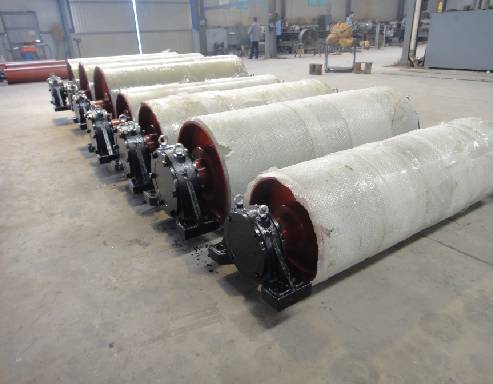 Afrikaans
Afrikaans  Albanian
Albanian  Amharic
Amharic  Arabic
Arabic  Armenian
Armenian  Azerbaijani
Azerbaijani  Basque
Basque  Belarusian
Belarusian  Bengali
Bengali  Bosnian
Bosnian  Bulgarian
Bulgarian  Catalan
Catalan  Cebuano
Cebuano  Corsican
Corsican  Croatian
Croatian  Czech
Czech  Danish
Danish  Dutch
Dutch  English
English  Esperanto
Esperanto  Estonian
Estonian  Finnish
Finnish  French
French  Frisian
Frisian  Galician
Galician  Georgian
Georgian  German
German  Greek
Greek  Gujarati
Gujarati  Haitian Creole
Haitian Creole  hausa
hausa  hawaiian
hawaiian  Hebrew
Hebrew  Hindi
Hindi  Miao
Miao  Hungarian
Hungarian  Icelandic
Icelandic  igbo
igbo  Indonesian
Indonesian  irish
irish  Italian
Italian  Japanese
Japanese  Javanese
Javanese  Kannada
Kannada  kazakh
kazakh  Khmer
Khmer  Rwandese
Rwandese  Korean
Korean  Kurdish
Kurdish  Kyrgyz
Kyrgyz  Lao
Lao  Latin
Latin  Latvian
Latvian  Lithuanian
Lithuanian  Luxembourgish
Luxembourgish  Macedonian
Macedonian  Malgashi
Malgashi  Malay
Malay  Malayalam
Malayalam  Maltese
Maltese  Maori
Maori  Marathi
Marathi  Mongolian
Mongolian  Myanmar
Myanmar  Nepali
Nepali  Norwegian
Norwegian  Norwegian
Norwegian  Occitan
Occitan  Pashto
Pashto  Persian
Persian  Polish
Polish  Portuguese
Portuguese  Punjabi
Punjabi  Romanian
Romanian  Russian
Russian  Samoan
Samoan  Scottish Gaelic
Scottish Gaelic  Serbian
Serbian  Sesotho
Sesotho  Shona
Shona  Sindhi
Sindhi  Sinhala
Sinhala  Slovak
Slovak  Slovenian
Slovenian  Somali
Somali  Spanish
Spanish  Sundanese
Sundanese  Swahili
Swahili  Swedish
Swedish  Tagalog
Tagalog  Tajik
Tajik  Tamil
Tamil  Tatar
Tatar  Telugu
Telugu  Thai
Thai  Turkish
Turkish  Turkmen
Turkmen  Ukrainian
Ukrainian  Urdu
Urdu  Uighur
Uighur  Uzbek
Uzbek  Vietnamese
Vietnamese  Welsh
Welsh  Bantu
Bantu  Yiddish
Yiddish  Yoruba
Yoruba  Zulu
Zulu Effective Cleaning Strategies for Conveyor Belts to Enhance Performance and Hygiene
Conveyor Belt Cleaning Solutions Ensuring Efficiency and Hygiene
Conveyor belts are integral to various industries, enabling efficient movement of goods across different stages of production and distribution. However, the buildup of contaminants, debris, and residues on these belts can lead to operational inefficiencies and compromised hygiene standards. Therefore, effective conveyor belt cleaning solutions are essential for maintaining optimal functioning and safety in industrial environments.
The Importance of Conveyor Belt Cleaning
Clean conveyor belts are critical for several reasons. Firstly, they ensure the smooth operation of production lines. Residues on the belt can cause friction, leading to mechanical wear and tear that may result in costly breakdowns and downtime. Regular cleaning helps extend the lifespan of conveyor systems, ensuring that businesses can operate without interruptions.
Secondly, hygiene is a pressing concern in industries such as food processing, pharmaceuticals, and packaging. Contaminated conveyor belts can lead to product contamination, resulting in health risks for consumers and potential liability issues for manufacturers. Implementing systematic cleaning solutions ensures compliance with health and safety regulations, protecting both businesses and their customers.
Types of Conveyor Belt Cleaning Solutions
There are various methods to effectively clean conveyor belts, each suited for different environments and types of contamination. Here are some common cleaning solutions
1. Manual Cleaning This traditional method involves the use of brushes, scrapers, and cleaners to remove contaminants from the belt surface. While it can be effective, manual cleaning often requires more labor and can be time-consuming.
2. Chemical Cleaning Utilizing specially formulated cleaning agents can enhance the cleaning process significantly. Chemicals can dissolve stubborn residues and biological contaminants, making it easier to sanitize the conveyor belts. It’s essential, though, to select non-toxic and food-safe chemicals for food-related industries.
3. Mechanical Cleaning Systems Automated cleaning systems, such as rotary brushes and scrapers, are designed to operate continuously or at scheduled intervals. These systems can effectively remove debris without manual intervention, making them ideal for high-volume production lines.
conveyor belt cleaning solutions

4. High-Pressure Water Jets For heavy-duty cleaning, high-pressure water jets can be employed to blast away tough residues. This method is particularly effective in environments with ingrained dirt and grease but must be used with caution to prevent damage to the belt equipment.
5. Ultrasonic Cleaning This innovative method uses ultrasonic waves to remove contaminants effectively. It’s particularly beneficial for cleaning intricate components of conveyor systems where residues may accumulate in hard-to-reach spots.
Implementing an Effective Cleaning Strategy
To maximize the benefits of conveyor belt cleaning solutions, businesses should implement a comprehensive cleaning strategy that includes the following steps
- Regular Maintenance Schedule Establish a routine cleaning schedule based on the volume and type of materials being transported. For example, food processing facilities may require more frequent cleaning than general manufacturing operations.
- Proper Training Ensure that employees are trained on the proper use of cleaning equipment and chemicals. Understanding the right techniques and safety protocols is essential for effective cleaning and minimizing risks.
- Monitoring and Inspection Regularly inspect conveyor belts for signs of wear and contamination. Continuous monitoring can help identify potential issues before they escalate, maintaining the efficiency and hygiene of your conveyor systems.
- Documentation Keep detailed records of cleaning activities, including frequency, methods used, and any issues encountered. This documentation can help with compliance audits and continuous improvement efforts in cleaning processes.
Conclusion
In conclusion, effective conveyor belt cleaning solutions are vital for maintaining the efficiency and safety of industrial operations. By selecting the appropriate cleaning methods and implementing a structured cleaning strategy, businesses can minimize downtime, extend the lifespan of equipment, and ensure compliance with hygiene standards. As industries evolve and standards increase, investing in advanced cleaning technologies and practices will be crucial for sustaining operational excellence.
-
Revolutionizing Conveyor Reliability with Advanced Rubber Lagging PulleysNewsJul.22,2025
-
Powering Precision and Durability with Expert Manufacturers of Conveyor ComponentsNewsJul.22,2025
-
Optimizing Conveyor Systems with Advanced Conveyor AccessoriesNewsJul.22,2025
-
Maximize Conveyor Efficiency with Quality Conveyor Idler PulleysNewsJul.22,2025
-
Future-Proof Your Conveyor System with High-Performance Polyurethane RollerNewsJul.22,2025
-
Driving Efficiency Forward with Quality Idlers and RollersNewsJul.22,2025





























